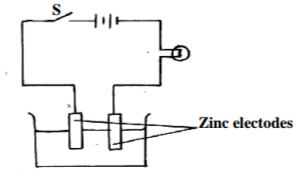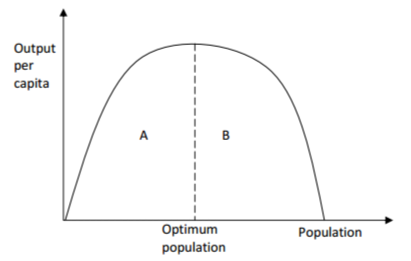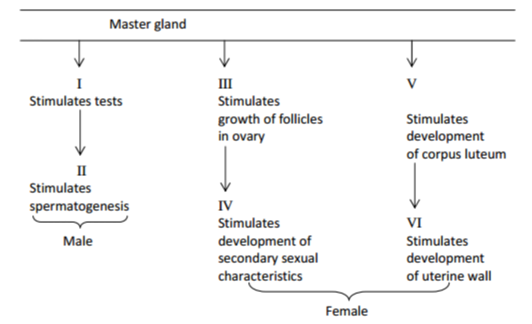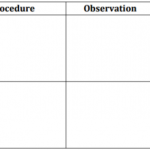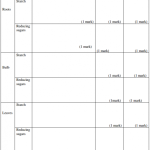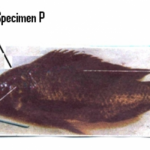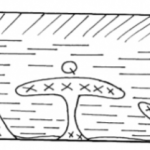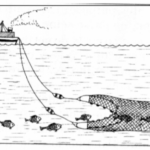KNEC KCSE Biology Paper 2 – 2014 KCSE COMA Joint Exam
2014 KCSE COMA Joint Exam
Biology Paper 2
SECTION A: (40 Marks)
Answer ALL the questions in this section in the spaces provided.
Examine the diagram below and use it to answer the questions that follow.
(a) Name the parts labeled. (3mks)
B __________________________________________________________________________ C __________________________________________________________________________ D __________________________________________________________________________
(b) What is substance which makes up part labeled A? (1mk) ____________________________________________________________________________
(c) Name the process by which mineral salts move into structure B. (1mk) ____________________________________________________________________________
(d) Explain what happens when a red blood cell is put in distilled water. (3mks) ____________________________________________________________________________
____________________________________________________________________________
____________________________________________________________________________
____________________________________________________________________________
5 marks
The figure below is a pedigree showing the inheritance of colourblindness, a disease transmitted
through a recessive gene located on the X-chromosome.
(a) Using the symbol N for normal gene and n for colourblind gene, write down the genotypes
of parents 1 and 2. (2mks) ____________________________________________________________________________
____________________________________________________________________________
(b) Work out the possible genotypes of the children 3, 4 and 5. (4mks)
(c) The diagrams below illustrate some chromosome mutations.
Identify the mutations. (3mks)
A __________________________________________________________________________
B __________________________________________________________________________
C __________________________________________________________________________
9 marks
The diagram below shows structures of the bat wing and human arm.
(a) These structures are thought to have same ancestral origin. State one structural similarity
and one adaptational difference between the two.
(i) Structural similarity. (1mk) ______________________________________________________________________
(ii) Adaptational difference. (2mks) ______________________________________________________________________
______________________________________________________________________
______________________________________________________________________
______________________________________________________________________
(b) Give two other examples of structures in nature that show the type of evolution as in
(a) above. (2mks) ____________________________________________________________________________
____________________________________________________________________________
(c) Distinguish between the terms ‘chemical evolution’ and ‘organic evolution’. (2mks) ____________________________________________________________________________
____________________________________________________________________________
____________________________________________________________________________
____________________________________________________________________________
(d) What is the study of fossils called? (1mk) ____________________________________________________________________________
8 marks
The diagram below represents some hormones, their sources and functions in a mammal.
(a) Identify the gland described as master gland. (1mk) ___________________________________________________________________________
(b) Name the hormones:- (4mks)
II __________________________________________________________________________
III _________________________________________________________________________
V __________________________________________________________________________
VI _________________________________________________________________________
(c) Describe the consequences of deficiency of hormone II in man. (2mks) ____________________________________________________________________________
____________________________________________________________________________
____________________________________________________________________________
____________________________________________________________________________
(d) Other than stimulate development of uterine wall, suggest two other functions of hormone
VI. (2mks) ____________________________________________________________________________
____________________________________________________________________________
____________________________________________________________________________
____________________________________________________________________________
9 marks
Ascaris lumbricoides is an endoparasite.
(a) Name the genus to which it belongs. (1mk) ____________________________________________________________________________
(b) State the habitat of the organism. (1mk) ____________________________________________________________________________
(c) State three ways in which the organism is adapted to living in its habitat. (3mks) ____________________________________________________________________________
____________________________________________________________________________
____________________________________________________________________________
____________________________________________________________________________
(d) Mention three ways of preventing spread of the parasite. (3mks) ____________________________________________________________________________
____________________________________________________________________________
____________________________________________________________________________
____________________________________________________________________________
8 marks
SECTION B: (40 Marks)
Answer question 6 (compulsory) and EITHER question 7 or 8 in the spaces provided after question 8.
The table below shows how the quantities of sweat and urine vary with external temperature.
| External temperature | C Urine cm³/hr | Sweat cm³/hr |
| 0 | 100 | 5 |
| 5 | 90 | 6 |
| 10 | 80 | 10 |
| 15 | 70 | 20 |
| 20 | 60 | 30 |
| 25 | 50 | 60 |
| 30 | 40 | 120 |
| 35 | 30 | 200 |
(a) On the same graph, plot the quantities of urine and sweat produced against the external
temperature. (7mks)

__________________________________________________________________________
(c) What happens to the amount of sweat produced as the temperature rises? Explain the
observation. (3mks) __________________________________________________________________________
__________________________________________________________________________
__________________________________________________________________________
__________________________________________________________________________
(d) Explain the observation made on the amount of urine produced as the temperature
increases. (3mks) __________________________________________________________________________
__________________________________________________________________________
__________________________________________________________________________
__________________________________________________________________________
(e) How is the skin adapted for temperature regulation? (6mks) __________________________________________________________________________
__________________________________________________________________________
__________________________________________________________________________
__________________________________________________________________________
__________________________________________________________________________
__________________________________________________________________________
__________________________________________________________________________
__________________________________________________________________________
20 marks
Describe the structural adaptations of the mammalian heart to its function.
20 marks
Describe how water moves from the soil to the leaves in a tree.
20 marks
